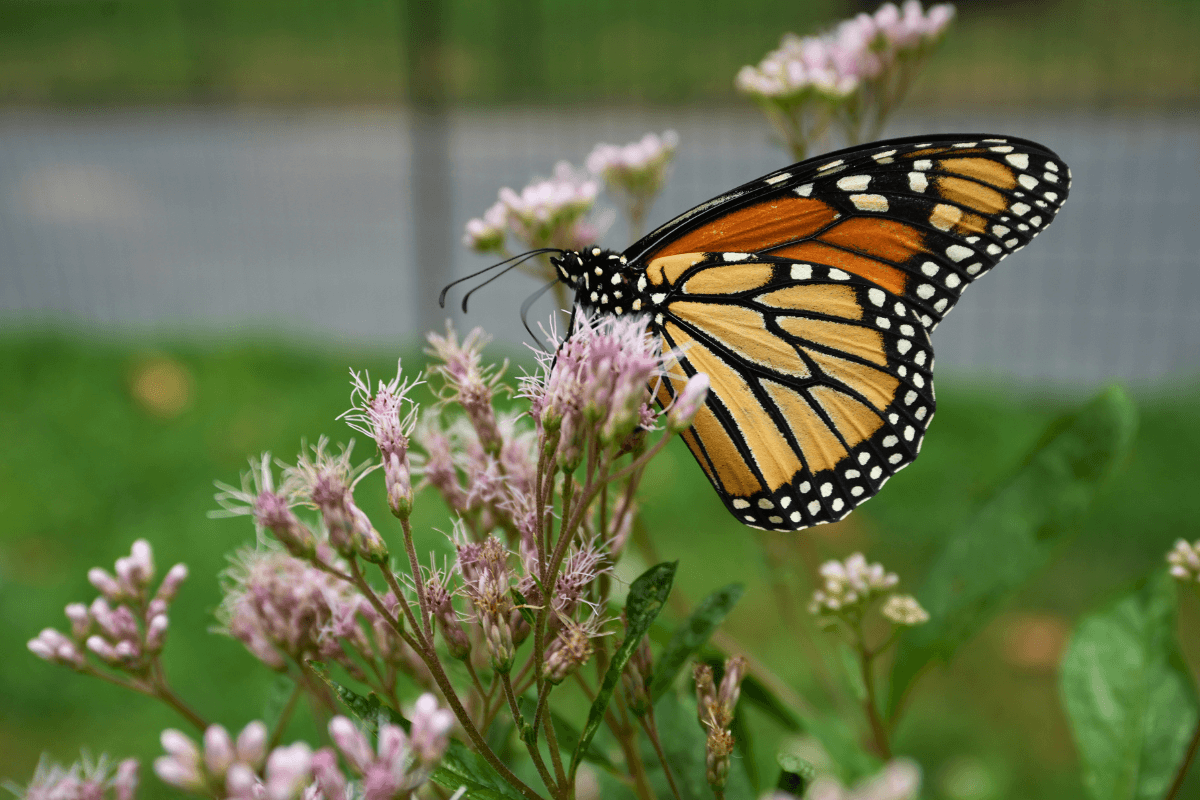This site uses cookies – Learn more.
Seed Saving and Conservation at Madison Square Park
Seed Saving and Conservation at Madison Square Park
Installed during the still cold days of spring, Gardens of Renewal underwent a dazzling transformation throughout the summer. If you made the journey spiraling around the path, you would have seen vibrant blooms and busy pollinator activity. Once the petals start to drop away, the next stage begins: the formation of seeds. Each bloom is that plant’s effort for reproduction. With help the help of pollinators, a seed forms with a combination of new genes, creating diverse offspring and a stronger generation of plants. Collecting and growing these seeds promotes genetic diversity and conservation of New York’s native species.
Habitat loss, fragmentation, invasive species, altered hydrology, and climate change among other factors are threats to New York’s native species. The genetic diversity of a species supports its resistance against disease and environmental changes but not all ‘new’ plants grow from seed to create this diversity. Some plants spread by shoots, called rhizomes, which grow underground and create a clone of the old plant. In horticulture, it is common to divide these plants and replant the second section, allowing one plant to essentially become two. This is often used for Pennsylvania sedge (Carex pensylvanica), which was in Gardens of Renewal, but due to the difficulty growing the plant from seed, there is low genetic diversity in the nursery industry. Growing from seed, particularly locally sourced seed, supports genetic diversity and these plants are more adapted to the area in which the seed was collected.
There were six species planted in Gardens of Renewal that are deemed vulnerable or imperiled in New York State as of 2024. Some species like spotted beebalm (Monarda punctata), is critically imperiled in New York State, but secure globally. Others like pink tickseed (Coreopsis rosea), are vulnerable both within the state and globally. Both plants flower from July through September and seed is collected in October and November, once the seed matures on the plant. Before Gardens of Renewal closed, the Madison Square Park Conservancy horticulture staff transplanted and collected seed from both these plants along with others in the garden, with the intention of growing a new generation within the park.
Many plants grow throughout the spring, bloom in summer, and create seeds in fall, laying dormant throughout the winter, hiding under leaves and snow. As the weather warms in the spring and rainfall and daylight increase, the seed is triggered to break through its casing and send roots into the soil. Seeds that are collected require stratification, a process that mimics natural patterns to trigger germination. Like a recipe, each seed has a different temperature, process, and time requirement to give it the best shot of growing. But there is variability in the process so there is always some amount of experimentation if you decide to try it out at home.
The seeds collected from Gardens of Renewal this summer will be placed in new homes as part of future garden designs at Madison Square Park and beyond. Even small ways to practice growing from seeds can be an exciting way to witness this cycle of life first hand.
By Claudia Thomson, Horticulture Intern at Madison Square Park Conservancy








